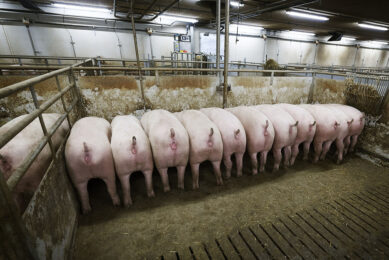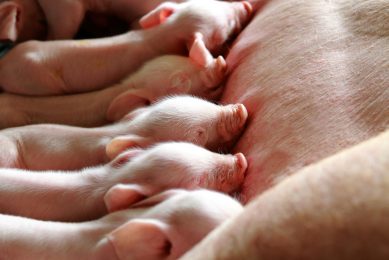How to prolong sow productive lifetime
Last time I showed that Sow Productive Lifetime (SPL) was far too short these days. I have been on farms recently where the replacement rate of breeding sows was 45% and even 50% – a huge waste of investment in their superb genetics.
Last time I showed that Sow Productive Lifetime (SPL) was far too short these days. I have been on farms recently where the replacement rate of breeding sows was 45% and even 50% – a huge waste of investment in their superb genetics.
There are plenty of national surveys which show the number of sows being prematurely culled due to reproductive failure at an early stage of their breeding life, around 26% to 34% of all culls. Animals which are only managing three litters instead of seven.
Why?
Incorrect gilt management and planning must surely be mainly responsible. We should ask ourselves why.
Incorrect gilt management and planning must surely be mainly responsible. We should ask ourselves why.
This may help – I suggest we divide this complex subject into three phases. Past and generally accepted practice; present advice which is still slowly being adopted, and future strategy, all of these involving the gilt and young sow.
Past advice
Past advice – not to serve the gilt too soon (220-240 days of age), at too light a weight (130-140 kg), at the third estrus and with backfat of 18-20 mm P2, is now being practiced by most farms I visit.
Past advice – not to serve the gilt too soon (220-240 days of age), at too light a weight (130-140 kg), at the third estrus and with backfat of 18-20 mm P2, is now being practiced by most farms I visit.
This first pregnancy is classed as parity 0 (P0) and establishing a gilt pool is advised so as to give the gilt time to mature physiologically, as well as avoiding being ‘caught short’ on properly-prepared gilt replacements. So far so good.
Present advice
Present advice is but slowly catching on. This goes further – feeding the pregnant gilt a special gilt developer diet, then a special first lactation diet which is different to the normal lactation diet.
Then as a first litter sow in her second pregnancy (P1) she is put back on the gilt developer diet and not a conventional dry sow diet as of now. From the start she is also accorded careful protective medication, e.g. vaccines, as advised by a pig specialist veterinarian supervising the herd’s present and future health.
Future advice
Future advice is under development and looks very interesting. Called parity segregation, this is based on the young sows in parities 0 to 2 being regarded as potential disease-shedders as they are not fully up to steam on acquired immunity.
Future advice is under development and looks very interesting. Called parity segregation, this is based on the young sows in parities 0 to 2 being regarded as potential disease-shedders as they are not fully up to steam on acquired immunity.
By keeping these ‘high risk’ young sows away from the main herd of P3 sows and upwards in a separate section of the farm and not merged with them until after weaning their second litter, there are fewer diseases in the older sows and vet/med costs are said to be significantly lower in the main portion of the herd.
Productive life
This concept (which can also be applied to the weaner progeny – also ‘high risk’ disease shedders – of these young sows which are housed in a separate nursery) also has raised the productive life of the older sows quite noticeably, there being more seven litter sows still doing excellently when farmed this way.
This concept (which can also be applied to the weaner progeny – also ‘high risk’ disease shedders – of these young sows which are housed in a separate nursery) also has raised the productive life of the older sows quite noticeably, there being more seven litter sows still doing excellently when farmed this way.
Of course it will be an econometric trade-off between the cost (and the bother) of having a young sow herd and an older sow herd kept apart and managed differently – set against the extra financial reward from lower replacement costs of a longer productive life and less disease in the whole herd.
Development
It will interesting to watch this development in the months ahead. Especially the economics and parity segregation’s ‘younger brother’ – weaner segregation.
It will interesting to watch this development in the months ahead. Especially the economics and parity segregation’s ‘younger brother’ – weaner segregation.
In my next blog I shall deal with legs, another major cause of enforced culling and a shorter productive life.











